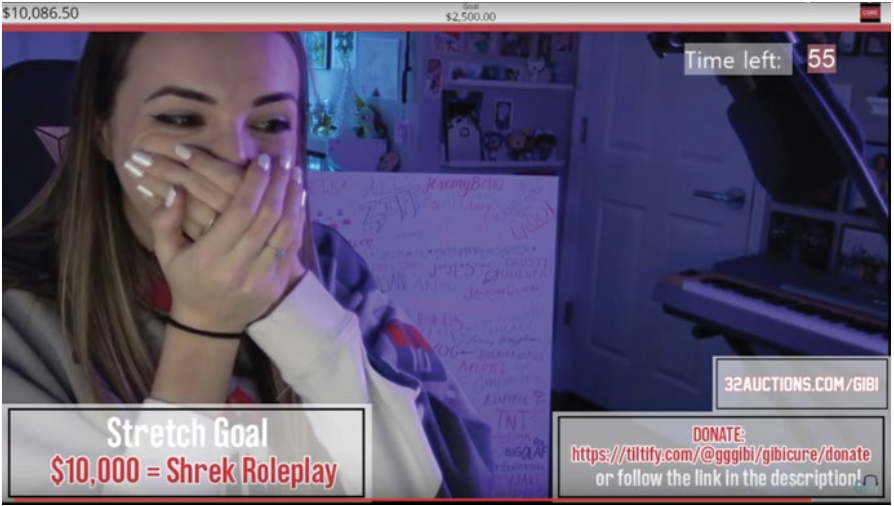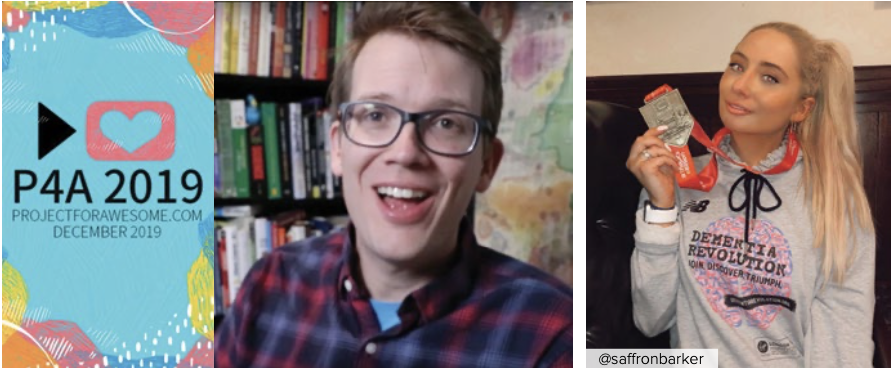Charlotte West discusses the success of recent charity campaigns, and how they can improve the reputation of influencers in the mainstream world
We are all aware that big brands have been turning to influencers to promote their products throughout the latter half of the decade. The deep connection that creators have with their audiences is a marketing dream, as their ‘influence’ really does mean they are capable of encouraging their followers to jump onto the latest trend.
It is not only brands that have recognised this new marketing strategy, but charities too have begun noticing the success of influencer-driven campaigns and have started to utilise it for fundraising.
It is heartwarming to see, as the mainstream media often portrays the influencer industry as a microcosm that perpetuates a narcissistic and greedy lifestyle; however, working with charities gives these big influencers an opportunity to be humanised and remind us that they have connections to these important causes too. Most recently a big charity that has taken to the online space to raise money is Great Ormond Street Hospital.
The children’s charity plans to host a gaming live stream during the first week of April to raise money, and they’re encouraging gamers of all varieties to get involved with the campaign.
Even their head office is participating by hosting their very own 48-hour long live streams, which will feature celebrity guests and giveaways. But what is it about live stream that seem to attract fundraisers? From as early as 2007, live streams were being used as a tool to raise money.
John and Hank Green from the Vlog Brothers set up their first annual Project for Awesome fundraiser. The campaign encourages all creators in the community, not just those with a large following, to get involved, adding to its widespread appeal. Anyone can make a YouTube video explaining why their chosen charity should receive a percentage of the total money raised, and even viewers can feel a part of the action by voting for their favourite videos and donating money to the cause.
The fact that this project spans across the entire YouTube community makes it an incredibly inclusive space, allowing everyone to feel like they’re making a difference, which is likely why it has sustained its popularity over the past 12 years.
In particular, it seems to be the 48-hour live stream that the Green brothers host that really emphasises that community feeling. Throughout the stream they invite guest creators to join them, hold giveaways and celebrate milestones, allowing everyone watching to feel apart of the success of the fundraiser.
Perhaps this is why live streams have soared in popularity since the set up of Twitch in 2011; there is no better way of feeling closer to your favourite creator than by watching them in real time.
Twitch in particular has become a popular site for fundraising, and this is evident following the introduction of Tiltify in April 2019, which places a donate button directly onto the Twitch site, allowing users with ApplePay or PayPal to donate without having to be redirected to a new page.
As gamers are the largest users of Twitch, it is unsurprising that their fundraisers can raise staggering amounts of money. For example, in January 2019, streamer H.Bomberguy decided to play the entirety of DonkeyKong64 from start to finish, in order to raise money for the UK trans organisation Mermaids.

The stream ended up lasting 57 hours, but was clearly worth the effort as he raised an astounding $340,000. Beyond gaming, the concept of watching live money being raised is always an exciting process and often encourages mass donations.
Gibi ASMR completed a 12-hour marathon live stream on YouTube to raise money for Citizens United for Research in Epilepsy in early December last year. By the end of the stream she had raised over $15,000, causing the YouTuber to break down in tears.
Her reaction proved to all those watching that she was genuinely overwhelmed by her viewers’ generosity, which only caused more people to donate, as she raised around $2,500, her target for the entire stream, within the final ten minutes.
Outside the realms of marathon streaming, charities have collaborated with influencers in other ways to fundraise. Last year Saffron Barker completed the London Marathon on behalf of Dementia Revolution.
Although she initially turned down the offer due to her belief that she was incapable of running that far, her personal trainer convinced her otherwise. As a result of this challenge, Barker opened up about her close connection to the charity, as her great granddad suffered from the disease.
This shows how charity campaigns can encourage influencers to be vulnerable and share even more of their personal lives with their audience. With followers already being invested in the lives of their favourite creators, the use of this emotional vulnerability makes the cause feel much closer to viewers, and thus they are more inclined to feel the desire to help.

As a result, Barker raised over £11,000 through her fundraising page. Another charity that frequently collaborates with influencers is Stand Up for Cancer. From getting influencers involved in special Great British Bake Off episodes to helping out on big projects, this charity understands the significance of content creators in our modern world.
These larger scale projects encourage influencers to get creative with their fundraising ideas; for example, ClickForTaz raised money for the charity through creating a fake art gallery in London, displaying artwork created by her and her fellow creators.
The video she made documenting the process currently has over 4.5 million views, and the online auction that she held following the release of the video selling the remaining paintings raised over £5,000. These examples prove just how much money influencers can raise as a result of their close relationship with their audience; they can have a profound effect on charities by raising thousands of pounds in comparison to the average fundraiser.
These staggeringly large sums of money can make such a @saffronbarker difference to their chosen cause and allow life-changing work to take place as a result.
So effective is the influence of these creators that the 15-year-old vlogger Nikki Lilly was able to set up her own charity with her family: Butterfly AVM. Due to the rarity of Nikki’s Arteriovenous Malformation condition, the charity does vital work in raising awareness, as well as money that can be put towards the research needed to find a cure.
Nikki’s incredible work has caused the mainstream media to pick up on her achievements, and helped to spread the message beyond the online space and to a wider audience, further showcasing the positive impact influencers can have.
Overall, there is a clear dichotomy between the perception of influencers as narcissistic and greedy, and this proof that their charity work can be a huge success. Despite the current popularity of influencers, this constant need to legitimise their place within the entertainment space is still an on- going struggle.
However, by working with charities influencers have the opportunity to prove that they are more than an Instagram #AD and can be part of a united force for doing good.
